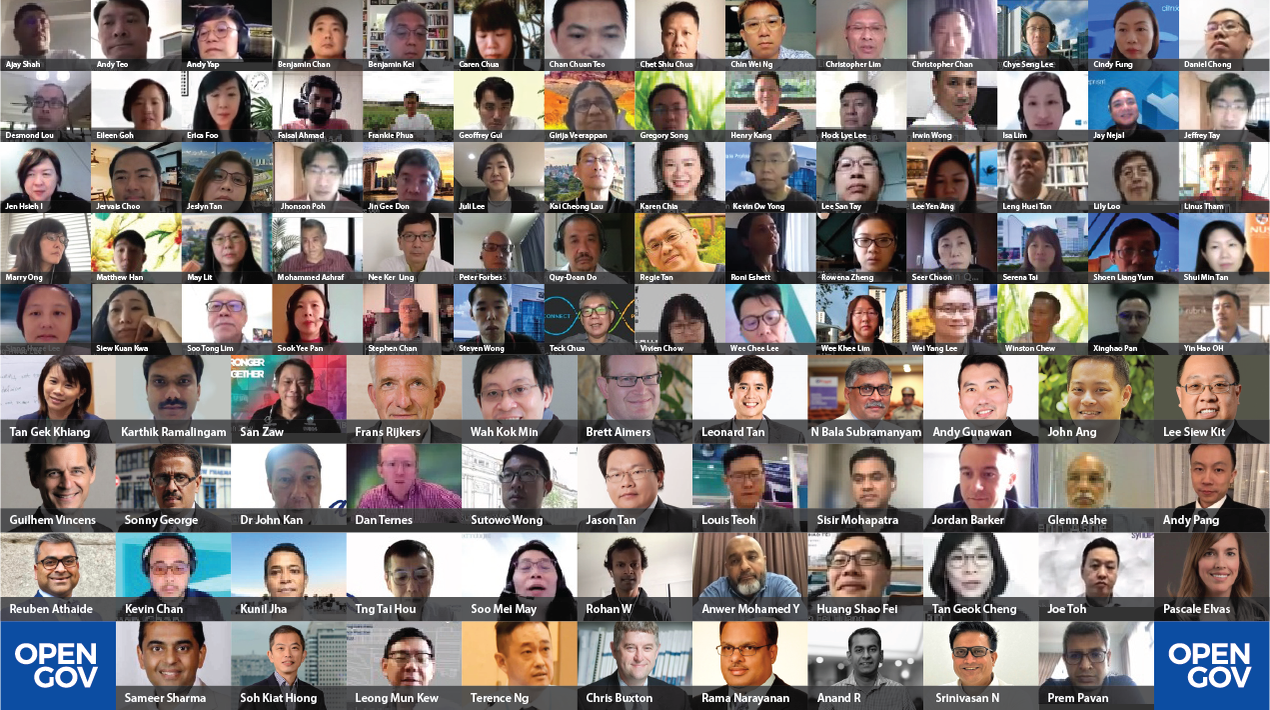
The Singapore OpenGov Leadership Forum 2021 – Virtual Edition was held over two days. This article covers Day 1. Read about Day 2.
Governments around the world are rapidly implementing digital transformation strategies to improve their engagement with citizens, deliver better public services and cut costs – all to help deal with the effects of the COVID-19 pandemic. Disruptive technologies and best practices from a variety of tech partners offer immense opportunities to improve efficiency, overhaul legacy IT infrastructures and even provide a new optic as to how to best serve the needs of citizens in an increasingly online world.
COVID-19 has advanced digital transition by years and has foundationally altered the way both the public and private sectors across the world deliver services, products and programmes. Government agencies and institutions have fast-tracked digitisation of internal operations and delivery of citizen services. Businesses implemented temporary solutions, that are morphing into more permanent ones, to meet changing and new demands – far more quickly than was thought possible before the crisis.
Indeed, a digital revolution is underway.
However, this is a daunting journey – stories of floundering projects abound. Nonetheless, organisations and agencies in government, healthcare and education that get digital transformation right are proving that the effort and investment reap significant rewards when done right.
This was the focal point of the discussion during the Singapore OpenGov Leadership Forum 2021 – Virtual Edition, Day 1 that brought key decision-makers and influencers from the country together on one forum.
Convening the brightest digital minds for a strategic level discussion on the issues that matter the most, the Singapore OpenGov Leadership Forum, with another 100% attendance in the morning and afternoon sessions, offered a unique way of tackling challenges. Intentionally planned, every activity and facet of the event was designed to let delegates garner exclusive insights from the digital leaders as well as demonstrate their thought-leadership.
As always, the forum provided intimate interaction between key ICT leaders from the Public Sector and leading technology providers who influence and determine digital strategies across agencies and organisations.
Apart from informative presentations from renowned speakers, this year’s Forum continued its award-winning OpenGov Gamification Table (OGT) format in the new OpenGov Gamification Virtual Rooms (OGVRs). Every OpenGov Gamification Virtual Room was a virtual heuristic exercise allowing delegates to learn from a variety of decision-making scenarios just as they would in the physical world.
A Cultural Shift in the New Normal

To kickstart the session, Mohit Sagar, Group Managing Director and Editor-in-Chief at OpenGov Asia delivered the opening remarks.
Long before the pandemic, there was an agreement on the benefits of remote working and talks on how to bring this about effectively and securely – but it did not happen in any significant way. Then, at the end of 2019 came COVID-19, which forced the world to halt in its tracks. Hit by an enemy that has never been encountered before in modern times, the virus respects no border, industry or community – devastating all with equal ferocity.
The public and the private sectors worked independently and together to fight the COVID-19, coming up with a slew of ad-hoc solutions and band-aid technologies. Digital initiatives and tech platforms were launched left and right. The demand on the public sector shot up dramatically as citizens, forced to stay at home, looked to the government for necessities to survive.
In the early stages, people were excited at the opportunity to work from home; a cultural shift that had been in the offing for a while. Interestingly though, the step was considered a “pivot” – with the connotation of reaction rather than strategic. People and organisations were said to be “pivoting” to manage and mitigate the issues the pandemic brought.
Beyond a doubt, both sectors did their jobs in terms of providing relevant programmes and initiatives throughout the age of COVID-19. But the question remains, were those initiatives innovative and intentional? Was enough done with the available tech? Additionally, as the initial euphoria of remote working wears thin, people, once happy about the shift, realise that the new normal disrupts their work-life balance and their well-being.
The good brings with it the bad, the unsafe and the difficult. Deployment, in normal circumstances, of technology like AI, Cloud and Data Analytics are accompanied by cybersecurity challenges. In a pandemic where almost everything has moved online, cyber breaches will happen.
Knowing this, Mohit challenged the delegates: if you put digital transformation at the heart of this revolution, is everything going to be miraculously in place? Or do we need to take technologies more seriously?
Organisations and institutions must find the right balance in their digital transformation journey using technology. They must also find leadership to achieve the ultimate end goal of a complete digital transformation in the new normal.
In closing, Mohit emphasised the need for agencies and organisations to find the right partner in their digital journey. Not just from the tech sector, but also the government, banking and FSI, to ensure that everyone is on the right path to an ideal digital transformation.
Singapore’s Digital Transformation
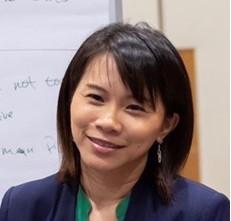
After Mohit’s opening remarks, the forum heard from Tan Gek Khiang, Director – Group Planning and Operation, Services group, Government Technology Agency of Singapore who talked about digitalisation in the Singapore Government.
Gek Khiang acknowledged that in 2020, there was a significant increase in new digital services and digital transactions with the government. The COVID-19 pandemic has accelerated the adoption of digital technologies by several years.
The Singapore government’s top 5 digital services with increased transactions include the following:
- Students Learning Space
- Parents Gateway Announcements
- Sales of flats
- My Careers Future Job Seekers
- My CPF Profile
Digitalisation would continue to be a key pillar of Singapore’s public service transformation and it aims to be digital to the core and serves with a heart. Part of this mission is the government needing to push ahead with its ambition to ride the digital evolution and to deliver greater impact and value to citizens, businesses and public officers.
First is digitisation, or the process of changing from analogue to digital form (without any different-in-kind changes to the process itself). The second is digital optimisation or the process of using digital data and technology to improve existing business models, operating processes, services or outcomes. Lastly is the digital transformation or the process of exploiting digital data and technology to reinvent or create new business models, operating processes, services or outcomes.
Singapore is striving to enable every agency to be a digital organisation that is Digital-to-the-Core (DttC) with the abilities to plan, execute and measure digitalisation efforts. A DttC organisation embodies a “Digital and Data by Design” mindset, culture and practices to transform its core business.
The organisation must have a mission-driven digitalisation strategy. A clearly defined digitalisation strategy that articulates the vision, and ambition of the agency to transform its business and leverage technology to fulfil its core mission, with a well-defined execution plan to deliver the outcomes. Next is to transform core business with policy development and planning, operations management and service delivery. It must also develop its people and partners, processes and data and technology.
Singapore Government’s Digital Maturity strategy leans on six priority areas:
- Leveraging data to create value
- Leveraging digital tools & platforms
- Designing end-to-end service journeys
- Deploying Agile at Scale
- Strengthening people capabilities
- Building digital ecosystems & partnerships
Gek Khiang’s agency supports the Singapore government’s digitalisation by enabling them to leverage data to create value and to help agencies to democratise the use of this data, develop data capabilities, provide data platforms and solutions across the whole of government (WOG). Leveraging digital tools and platforms provides WOG platforms and products that reduce duplication, accelerate development, improve interoperability and provide a consistent user experience. Designing end-to-end service journeys across the government for diverse users & moments of life. Deploying agile-at-scale to quicken the pace of digital services development. Strengthening people’s capabilities by developing central enablers to uplift ICT and Smart Systems (ICT&SS) capabilities across WOG and by building digital ecosystems & partnerships to nurture a thriving ecosystem of partners in the public sector and communities.
She conceded that they are already mid-way in their Digital Government Goals and there is still more left to be done. They need to such as continuously supporting agencies to go beyond optimisation to the transformation of their core business, raising the capabilities of agencies in their digital maturity and exploiting technologies more such as AI, Cyber-Physical tech etc.
Data Analytics and Digitisation in the COVID-19 Era
The forum next moved to a presentation from J.R Helmig, Innovation Lead Global Security Intelligence SAS Institute on how the pandemic affected data collection, digitisation, and analytics.
The ecosystem of data analytics is essentially people, processes, tech and data. Analytical foundations, practical outcomes and future-focussed mindsets must take the helm in an effective ecosystem. While not all analytical opportunities apply to all locations, organisations or agencies every time, they are critical to success overall.
COVID-19 accelerated the need for a viable ecosystem of data analytics – not only in terms of healthcare, workforce, and public services but also to combat the rise of online fraud and cybercrimes. Data standardisation and modernisation with proper training would be key to combat these crimes in addition to automating investigative responses.
It was pertinent to note, pre-COVID problems still exist in current analytical efforts. Challenges such as the high volume of incoming data, low quality of incoming report data, a wide variety of data sources being manually integrated, inefficient ways to investigate and handle suspicious cases, limited resources with increasing pressure to perform more efficiently and effectively, manual checks of technical matches to identify the right business match, limited analytics capabilities to identify and analyse networks and relationships and so on.
Organisations must go from being reactive to being observant of what is happening to shape future outcomes. J.R and his team help create an analytical pathway that helps organisations identify their analytical baseline. This analytic continuum acts as the knowledge hub or library for organisations. This greatly reduces tech implementation risks as well as costs.
J.R suggested that organisations should adopt a case management system. An effective case management system must generate solutions whether be it automatically or manually. It must also be populated with any of the data available in the solution that is needed to successfully the desired result.
J.R encouraged everyone to predict and plan their new normal. They should be proactive with ongoing issues such as facial recognition efforts, fake personal protective equipment, news to manipulate stock prices, threats to military readiness or asymmetrical national security threats, just to name a few. Every organisation must anticipate criminality during COVID – both near term and long term - for both direct and indirect impacts, document and improve business processes during the recovery period, and plan for ongoing change - in business operations and consumer behaviour.
Utilising a Multi-Cloud and Data Strategy

Karthik Ramalingam, Director – Systems Engineering, Dell Technologies was the next presenter. He talked about the company’s multi-cloud strategies.
Karthik started by presenting their Digital Transformation Index – 2020, noting that 89% of organisations recognise that they need a more agile IT infrastructure to allow for contingencies. The index showed that 80% of businesses have fast-tracked digital transformation programmes this year and 94% report facing entrenched barriers to transformation.
Speaking of a more agile IT infrastructure, Karthik proposed the cloud as an on-demand self-service that has broad network access, resource pooling, rapid elasticity and measured service.
The top 3 objectives driving cloud spending for customers are the following:
- New technology
- Digital Transformation
- Cloud-First Strategy
Karthik also noted that the cloud is not a destination or a place, it is an operating model and cloud-first is slowly becoming cloud-smart.
About the ongoing debate between the private cloud and public cloud, he felt that the answer is not one of them. Rather, it is both as organisations’ approach to Cloud Computing has evolved. A recent study shows that 93% of organisations will leverage multiple clouds environments over the next 2 years.
Operating in multiple clouds will lead to huge complexity such as costs, complex workloads, operational slots for management, disparate tools, observability and predictability, uncertain security postures, new skills and processes and inconsistent SLAs to name a few. These will all slow down cloud adoption and limiting its effectiveness.
Knowing this, he believes that organisations who choose a hybrid cloud platform can bring stability and consistency where workloads, apps, data are spread across multiple clouds bringing a consistent cloud experience for everything.
Karthik spoke on a use case for cloud-connected storage leading to data sovereignty by storing cloud data with a local CSP in a sovereign data centre. The user’s applications reside in any or all the major public clouds and the data and management of that data stay on shore with a local CSP (or with the SG Government), lastly, data is always encrypted at rest.
Another use case he mentioned was about cloud-connected storage to multi-cloud connectivity by having all cloud data in a single public cloud. It means storing data once with a local CSP and able to present it to multiple clouds simultaneously. Dislocating the application from the storage equates to application mobility between clouds becomes easier.
Talking about Singapore, he confirmed that Dell Technologies has a planned US$ 50 million (S$ 66 million) investment over three years since 2019 in the Global Innovation Hub (GIH) to accelerate developments in digital experiences and research & development capabilities. Of that planned investment, US$23 million (approx. S$30 million) will be invested this year. The establishment of the GIH has created more than 160 job opportunities in emerging technologies in Singapore and the hiring process will be completed by this year.
The innovation hub is a first-of-its-kind outside of the United States. It not only focuses on advancing digital transformation in areas such as augmented/mixed reality, data analytics, cloud-native, cybersecurity, edge computing but also includes a specialised team dedicated to elevating user experiences. The hub also houses existing R&D facilities for the development of digital products and solutions, a hardware prototyping lab dedicated to product design and innovation and an Artificial Intelligence (AI) Experience Zone.
Enriching Citizens’ Digital Journeys with Data
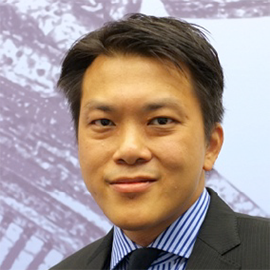
Taking over, San Zaw, Vice President Solution Consulting APJ, TIBCO spoke about enriching the digital citizen journey with self-service data and insights.
To achieve a true digital transformation in the new normal, San Zaw noted that accelerating citizen services (contextual, data-rich, and timely digital services) must remain a priority going forward. Enhancement of microservices, improving connectivity (IoT, Healthcare, Finance), data (data lakes, cloud, big data, packaged apps, data warehouses) and context (visual analytics, operational analytics, model ops).
The Modern Data Fabric consists of business intelligence (BI), self-service analytics, data science and operational transactions. It must also virtualise data layers for BI, Artificial Intelligence (AI) and other apps to govern master data, metadata and reference data. It must also have the capability to operationalise data with integration, messaging, and streaming.
Additionally, an ideal Data Hub must contain the following:
- Master/Reference Data Management (how to manage key data entities)
- Streaming Data Management (how to harness data in flight)
- Metadata Management (how to define things)
- Data Virtualisation (how to access all data across the enterprise)
Converging technologies are made up of data, human insights, automation and machine learning. While converging personas are made up of domain experts, data analysts, data architects, data engineers and data scientists.
Hyperconverged analytics must be immersive, smart and real-time to accelerate data-driven decisions. This brings visual analytics, data science, and streaming capabilities together in a seamless experience that delivers business insights in an easy to use and tailored way. Data however must be made available for analytics and operations with 350+ connectors for numerous ERP, CRM, database, data warehouse, data lake, collaboration, social data sources. Organisations must create accurate and consistent 360-degree views of any data – customers, products, suppliers, assets, and locations.
When it comes to AI/ML intelligence, the following practices are advised to further enrich a citizen’s digital journey:
- Make AI consumable with embedded intelligence automation
- Edge intelligence for faster response times with on-device on/off-line AI services
- Take new AI opportunities by participating in API-orientated AI marketplaces
Operationalising AI with Model Ops is about building repeatable processes to deploy, monitor, manage, refresh, and update models in production. It must also have the capability to monitor model performance, accuracy, and business metrics in production environments. It also can reduce risk through effective model governance and ensure compliance and “auditability” with approvals and workflows.
While automation is done for repetitive tasks for efficiency and accuracy. Organisations may look to create automation steps via a robust, developer-friendly set of APIs, solve their toughest automation challenges by creating custom tools to automate a wide range of actions and scoring data with models in Python, R, PMML, TensorFlow, etc. in real-time.
In closing, he emphasised that unlocking the potential of real-time data is vital to making faster, smart decisions that will lead to solutions to citizens’ most critical challenges.
Digital Identities in the Blockchain Era
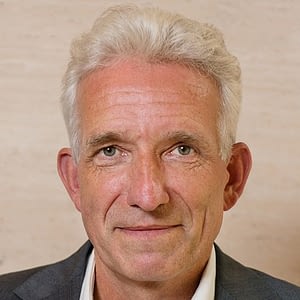
The delegates next heard from Frans Rijkers, Strategic Advisor, Innovation and Identity, National Office for Identity Data, The Netherlands who talked about digital identities in the blockchain era. He affirmed that all relevant verifiable and personalised credentials such as ID cards, bank details, employee ID and even concert tickets should be available to the user digitally, e.g., in a wallet.
Keeping with this, the Netherlands’ “NL Digibetter” Government Agenda aims to increase the autonomy of individual citizens and entrepreneurs. It intends to create one central place in which citizens and entrepreneurs can meet government and institutions to deal with those issues that relate to them personally.
The many possibilities include altering citizen’s data, gaining access to any data that is recorded about the user, granting consent for the use of personal data, and managing the citizen’s digital login facilities. The government’s digital agenda consists of the following:
- investing in innovation
- protecting fundamental rights and public values
- accessible, understandable and intended for everyone
- making citizen services more personal
- getting ready for the future (annual review of digital agenda)
In this Digital Government Agenda, the needs and rights of citizens and entrepreneurs will be the central point of focus, alongside the social challenges – for example, in the fields of security and healthcare. It will be realistic and will work at a pace that matches the speed of modern developments.
The complexity of the issues calls for all of government to act jointly and with clear leadership in taking responsibility to tackle those challenges. Digitalisation is more than day-to-day practice: it is a subject for discussion at the boardroom level. And because digitalisation is not restricted by national boundaries, it calls for close collaboration with other European countries.
Four heads of government recently emphasised the importance of digital identity as part of Europe’s digital sovereignty – the Chancellor of the Federal Republic of Germany, Prime Minister of the Kingdom of Denmark, Prime Minister of the Republic of Finland, Prime Minister of the Republic of Estonia. They agreed that the Commission should come forward with proposals for new initiatives as well as strengthening ongoing initiatives. the group champion the need for solid framework conditions that foster an innovative, responsible and safe digital economy, including an EU-wide ecosystem for digital identities.
In terms of the European Blockchain Service Infrastructure, all EU members collaborate in the European Blockchain Partnership, realising services for the benefit of citizens, society and economy and services for verification of information on selected use cases.
A new data-sharing pattern is emerging thanks to these three main technology developments:
- Blockchain (new trust anchor)
- Verifiable Credentials (new document format)
- Digital Wallet (new app)
There is a new paradigm for making data trustworthy and blockchain is often misunderstood as another data sharing protocol. First, blockchain is not a protocol for sending and delivering data between systems but a shared ledger that creates permanent digital records. Blockchain uses cryptographic methods and a distributed consensus that creates trust between disparate systems. It is also a new trust system that is used to anchor verifiable claims so parties can trust them. Lastly, blockchain allows greater control for the end-user.
He conceded that this digital transition propelled public administrations to this paradigm shift. From one-size-fits-all to user-centric approach, from hierarchical to networked ecosystems, from centralised to distributed and from closed and proprietary to open and collaborative all because of this so-called digital transformation.
Modernising Workspaces in the New Normal

Frans session was followed by a presentation on adapting to the new ways of working in the new normal from Wah Kok Min, Senior Product Client Technologist, Dell Technologies.
The onset of COVID-19 is an unprecedented moment in history. Travel restrictions made it nearly impossible to continue “business as usual”. Businesses need to enable their employees to work remotely and maintain productivity, increase connectivity and provide for continuous, secure access to applications across endpoints.
Modernising to a Hybrid Workplace arrangement must be a seamless experience anytime, anywhere. It will start from the home of the employee equipped with seamless desktop apps, rich conferencing experiences and capabilities to leverage home broadband. Mobile productivity apps with seamless access to one-click meetings must also be incorporated. Lastly, the office must have a seamless Wi-Fi connection, contemporary meeting rooms and genius bar-style support.
As per studies, managing remote productivity came in as the most pervasive challenge for IT decision-makers (ITDMs) managing their organisations through this crisis. For enterprise, increase cost and complexity of logistics served as the most common challenge. In a crisis, operational norms are upended. Cybersecurity, which traditionally rates at the very top, comes in as the fourth most common IT concern. Responding to COVID-19 (surviving, adapting, and weathering uncertainty) are the most common concerns today.
Governments and industries alike must start with an approach that focuses on modernisation. Providing the right device with intelligence and security built-in, enhancing employee productivity with built-in software and services and accelerating modernisation with automation, insights and optimised experiences.
He conceded that the traditional workspaces may not work in the new normal brought by the pandemic so organisations must learn to adapt and modernise.
Wah Kok min acknowledged that the workforce’s support and assist system must be easy-to-use for managing assets and alerts, it must proactively resolve issues if there is a problem, a case is automatically opened, and troubleshooting steps shall commence right away, and the system also be equipped to gain insights and early indication of performance issues with hardware and software utilisation.
Embracing Big Data and Analytics Today for a Resilient Tomorrow

Brett Aimers, Adjunct Associate Professor, James Cook University Australia followed with a presentation about Big Data and Analytics, exploring how to embrace big data and analytics today for a more resilient tomorrow.
Setting the tone for his session, Brett said major disasters would occur more frequently as time goes by. While COVID-19 has, undoubtedly, been the most disruptive global event since World War II, climate and weather patterns are changing adversely. Therefore, thinking about a resilient society is simply not enough.
In 2019, 396 natural disasters occurred across the globe. Costing more than US$ 146 billion, over 12,000 people lost their lives in these disasters. In a more regional context, Asia experienced 40% of natural disasters and 45% of all attributed deaths in the same year.
With data and information on hand, organisations must utilise big data and analytics more effectively to predict critical events and their impact; and must share this information. Big data, analytics and information sharing are key to survival and economic recovery.
Major disasters lead to major disruptions, loss of life, a sense of helplessness and lack of trust. Big Data and Analytics can create countermeasures to help mitigate these – early detection, advanced warning, maps and layers, decision making and effective communication – creating confidence within the community.
Decision-makers get relevant and timely insights about possible disasters, enabling early decision making that can protect critical assets, (including relocation of their resources) contribute to impact assessment and support economic recovery.
Brett urged the public and private sectors to acknowledge the significant drivers for change. The first is that research indicates that two-thirds of the global population will live in cities by 2050. Another is that spending on disaster recovery is nine times higher than spending on prevention…literally, a stitch in time saves nine.
Brett concluded his presentation on a positive note. While COVID-19 may have an end date, climate change and natural disasters – of the scale critical events are inevitable. But big data, analytics and efficient information sharing can save lives and promote economic recovery.
Empowering the Public Sector’s Digital Transformation

The forum then heard a presentation from Leonard Tan, Country Manager, Singapore, Outsystems who elaborated on empowering the public sector’s digital transformation from within.
He emphasised that a government that is digital to the core must serve with a heart. A study that says that by 2023, more than 80% of the government’s digital implementations that do not build on a technology platform will fail to meet objectives. Governments must address their decaying technology infrastructure and become productive members of the digital ecosystem. Government CIOs can make the case for sustained IT modernisation funding by showing how digital platforms are vital to lowering risk and achieving business transformation goals.
Leonard mentioned 3 things regarding an organisation’s internal digital transformation. An organisation must:
- Build it fast (serious productivity)
- Build it right (serious applications)
- Build for the future (platform for a change)
Building it fast means adopting a Digital Government Technology Platform (DGTP) that focuses on customer/citizen experience transformation, workplace innovation, process automation and application modernisation.
One use case that he mentioned was Shawnee Kansas, which was previously heavily dependent on Lotus Notes and was unable to re-platform. It had a lean IT team with 1 app developer towards its rapid development without any additional headcounts that led them into modernising their legacy systems and applications with speed which increased their productivity.
Building it right means decision-makers must have insights into how a platform approach to government can transform the way that government operates and interacts with citizens, things and ecosystem partners. They understand the value of business flexibility afforded by platform service models and extending the ecosystem to include digital transactions. This awareness should position government CIOs to support their executive and programme area leaders in transforming government, which will necessitate leveraging a DGTP approach for delivering better mission outcomes.
The main components of a DGTP are the following:
- Customer/Business = Customer Experience Platforms
- Things = IoT, Analytics, Security
- Partners = Ecosystem Platforms
- Employees = Information Systems Platforms
Digital experiences are about engaging customers/citizens. Digital operations must streamline inefficient, manual and paper-based processes and the digital core must be able to transform large legacy systems.
Lastly, building for the future means empowering developers and extending reach outside of IT. (UI, Logic, Process, Data), enhancing experiences and reaching all touchpoints with the widest ranges of digital experiences, integrating and extending by never starting from scratch and implementing a limitless and easy integration system and a full lifecycle by being agile and continuously changing and automating the software’s lifecycle.
Digitally Connected Governance

N Bala Subramanyam, Additional Director General of Police – Organisation, Strategy and Planning, Government of Andhra Pradesh talked about a connected government equating to a connected citizen.
In terms of citizen services, Mori is the first village in Andhra Pradesh with an all-digital government. From 2015 onwards, the AP government goes to the Village Panchayat Office or to the doorstep of the citizens to disburse the Pension to 4.3 Million Citizens.
Vehicle registration was another milestone. Until 2016, the average time taken to get a vehicle registered was 79.2 days and people must submit 6 document proofs, get one inspection, physically reach RTA / DMV and work through an agent. From 2017, when the citizen buys a car, he/she can take his/her family for a joy trip, and not stand in a queue at the DMV, while the RC Book is emailed to the citizen in just one day.
In the past, to get Deepavali Crackers License, citizens need to visit 4 offices of police, fire, revenue, land registration and submit voluminous document proofs and go through a huge amount of stress. Now, with the Deepavali apply-in-one app, citizens can just sit at their shops and plan their sales, while the police, fire, revenue offices work for them to mail their license in just 2 days.
Apart from all these improvements in utilising digital technologies, he discussed their Works Management System (WMS). As of November 2018, the WMS app automatically matches and validates the eMBook entries with the standards and specifications rates, reflects the road works on the Google Maps, plugs irregularities and leakages, keeps the citizens informed, documents via 3rd party audit, QC outcomes, and other outcomes are being brought to the contractor and the government’s engineer much faster than before.
All in all, the newly formed state of AP embraced digital transformation to achieve visible governance and invisible government. Their main strategy is for government to act as a service and as a platform. They aim to provide citizen-centric service redesigned with outcomes through self-service or service delivery by 3rd Party. This digital transformation standard is also published as a government order.
The AP government’s digital services platforms include the following:
- myAP Portal (Single access for all government services)
- License Management System (Enabling citizens to consume and store licences on request)
- Certificate-less Governance System (Enabling certificate-less service delivery)
- APp Store (Government app store for deploying desktop and mobile apps)
- E-Highway (Repository for all government APIs)
- DataLytics (Robust Analytical Platform)
- ePragati Cloud (Next Level State-of-Art Data Centre Experience)
- Core Development Platform (Rapid Application Development)
- Localisation
At the end of his presentation, N Bala emphasised a few best practices they adopted for their digital transformation journey. He felt that governments must move from silos to an enterprise; learn to reuse the data and not recreate the data and make it contactless, paperless and cashless. Backend rules and procedures, validations, verifications etc should be automated to the extent possible. Reduce the number of forms the citizen requires to fill as well as the number of process steps that the application goes through. Governments should push the development of integrated services that cut across various departments. Lastly is to make all these standards into a government order, so it is backed by the law.
Improving Citizen Experiences through Digitalisation
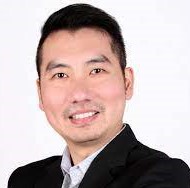
The session then moved on to a presentation from Andy Gunawan, Asia Regional Sales Director, Nintex who discussed ways on how to digitally transform government operations to improve citizen experiences.
Organisations struggle to digitally transform. One reason is the lack of visibility into core business processes. Over 75% of enterprises feel processes are not well understood or up to date in their business. Another is the lack of resources to meet business demand. About 68% of enterprise business processes remain highly manual today despite past digital efforts and the lack of capability in current tools or systems. Close to 80% of enterprises require ongoing process improvement and automation know-how.
Andy opined that one way to accelerate digital transformation is to improve and streamline processes:
- Easy – collaboratively map, improve, and prioritise processes quickly
- Agile – low code, drag and drop, powerful, dozens of connectors
- Fast – implement in days to weeks, built for constant change
- Affordable – scalable, easy-to-update, low total cost of ownership
Andy discussed their company’s practices which are easy to use, powerful and complete. The platform can discover and map business processes with tools, process owners and participants, design sophisticated forms for all stakeholders in office or on-the-go, automate advanced business processes for people, data, and documents, drive speed and volume by mimicking most human-computer interactions, create documents with key data and automation quickly and easily. It is equipped with an “eSign” capability for documents with signature-based workflows and optimising automation performance to gain insight with process intelligence.
The National Gallery in Singapore oversees the world’s largest public collection of Singaporean and Southeast Asian art. With nearly 1.8 million visitors in the last year, the National Gallery Singapore is the most preferred museum in the country. In response to the COVID-19 outbreak, the National Gallery Singapore was looking to update business contingency requirements. The gallery needed to implement a new visitor registration form as a precautionary measure to support contact tracing if needed.
The Gallery’s IT Team built a new visitor registration form using Nintex Workflow Cloud in just 3 days. Details from visitor forms are recorded in a secured SharePoint list. The National Gallery Singapore can capture additional information from all visitors no strain on employees and the organisation is equipped to provide data to the relevant authorities if contact tracing is required.
Andy conceded at the end of his presentation that delivering a great experience to citizens and suppliers in the public sector must be the utmost priority. Further focus on the following fields is advised:
- Government Administration
- Public Works & Services
- Emergency Operation Centre (EOC)
- Technology Services
- Human Resources
- Defence
- Agencies Finance
Workforce Automation

The forum heard from John Ang, Product Manager, AI Innovation, AI Singapore on the ways on how to bot your workforce in 2021.
The mission of AI Singapore is to anchor deep national capabilities in AI, thereby creating social and economic impacts, grow local talent, build an AI ecosystem with programme coordinating agencies and fund universities and research institutions to help put Singapore on the world map.
AI research is at the helm, inventing next-generation AI techniques/algorithms with an R&D Roadmap, research grant calls and capability clusters. Next is AI technology by creating significant economic and social impact through solving national challenges and AI innovation and maker space catalysing AI innovation in the Industry through AI software, co-creation of solutions and talents: 200 Industry Projects, pre-built AI solutions: “AI Bricks”, Enablement: AI Apprenticeship Programme (AIAP)®, AI for Industry (AI4I) ® Training partnered with AI for Everyone (AI4E) ®
Today, John noted that only 40% of Singapore enterprises make digital investments. At first, organisations prioritise digital transformation for absolute change and earn money. Second is the digitalisation stage to improve organisational capabilities and save money. Lastly is digitisation to fully convert processes where they are spending money.
He advised organisations to focus on the digitalisation stage of the pyramid to save more resources. Examples of these practices are the following:
- EDM Blast -> Targeted Marketing, Brick & Mortar -> E-commerce, Gut Feel -> Data Driven Insights
- Manual -> Automated, Back-Office Processes, Dashboarding and Reporting, Customer Self-Service and Skilled Labour Decision Making
- Physical Forms -> Electronic Files, Paper Records -> Digital Records
John noted that the more AI you put in in your processes, the more integration it requires. Robotic process automation (RPA) bots are the easiest target in digitalisation and AI adoption due to their low cost and easy deployment. It also provides the fastest ROI and benefits, he added.
The best-fit workflows for RPA include the following:
- Repetitive
- High Frequency
- Time Consuming
- Error-Prone
- Multiple People
- Digitised
John said that the RPA landscape in enterprise workflows usually benefits from back-end integration and is cross-departmental and uses a single major process. It is present in high-security requirements, mission-critical workflows and ties up major resources as a process. On the other hand, RPA in Ad-hoc workflows usually have no back-end integration available or not worth the effort or the cost to implement. It is only within a department or local to several people. It can handle multiple minor repetitive processes but usually drains on employee productivity.
John shared that their company created TagUI, a simplified and efficient system to help address the issues of implementing RPA in Ad-hoc workflows. He extended an invitation to collaborate to delegates who are open to becoming contributors and early adopters of the system.
Power Talk
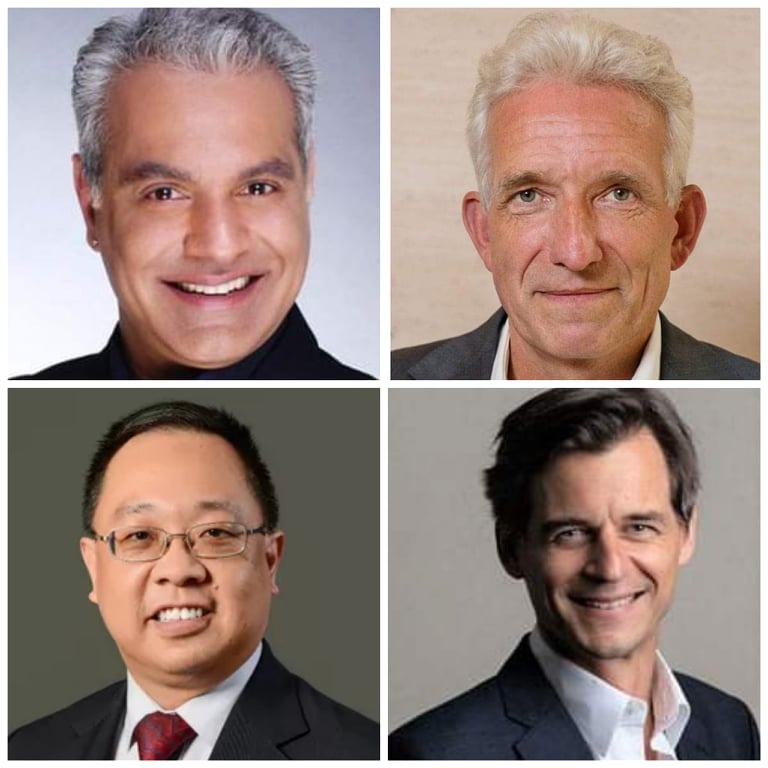 After the informative presentations from the speakers, the session shifted to a Power Talk discussion where Mohit joined panellists Frans Rijkers, Lee Siew Kit, General Manager, T5 Planning, Changi Airport Group and Guilhem Vincens, Head of Change and Innovation, ABN AMRO Bank N.V.
After the informative presentations from the speakers, the session shifted to a Power Talk discussion where Mohit joined panellists Frans Rijkers, Lee Siew Kit, General Manager, T5 Planning, Changi Airport Group and Guilhem Vincens, Head of Change and Innovation, ABN AMRO Bank N.V.
On the agenda was public services in the new normal and what does the word “Reboot” mean. Open for discussion was the kind of transformation the panellists were expecting to see and how did they think technology would support the reshaping of the world with lessons learned from COVID-19.
In terms of rebooting, Frans Rijkers said that while everyone is talking about the new normal in the Netherlands, some are already itching to go back to the old normal such as opening the border, going from point A to point B, building back the economy, as well as the old norm of working such as the traditional, onsite workspaces. But at the end of the day, he conceded that there is a lot of work to do moving forward.
Lee Siew Kit said, in the reboot stage, some of their employees prefer working from home but some are longing for physical interaction in the physical offices. For him, the reboot will involve a hybrid setup where people can still work in the virtual space while also being present in the onsite workspace from time to time when the future situations permit.
Guilhem Vincens on the other hand said that people have befriended technology and there is no going back. Innovations such as online banking and digital-only banks are here to stay. Therefore, he thinks, that the biggest long term societal impact of the pandemic is that it accelerated the adoption of digital technologies and it will continue to do so. That is how he defines the word reboot in the new normal.
The Singapore OpenGov Leadership Forum 2021 – Virtual Edition was held over two days. This article covers Day 1. Read about Day 2.
















